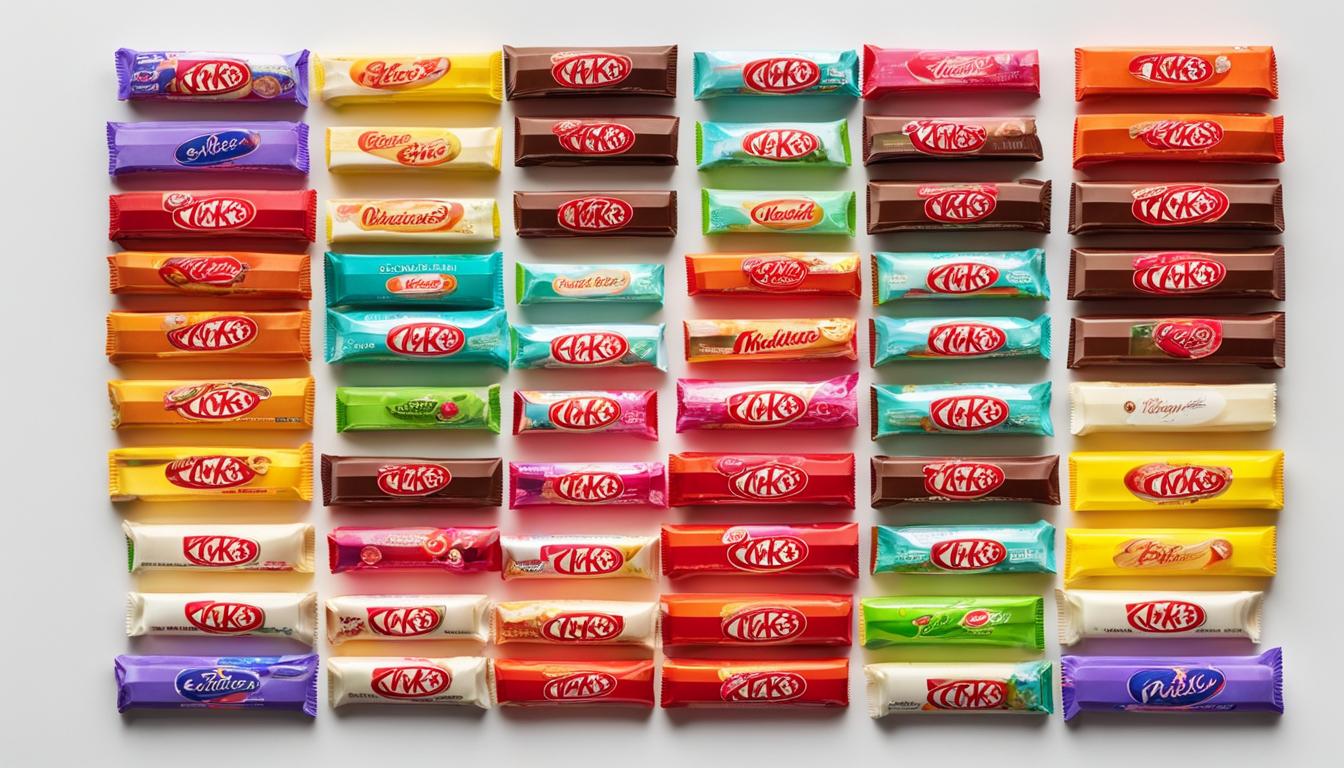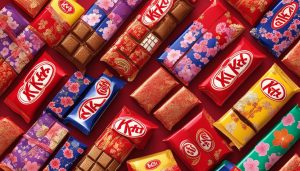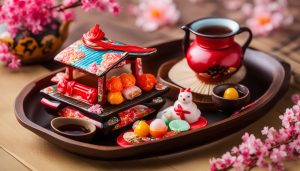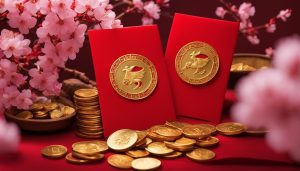In Japan, there are fascinating cultural traditions that may surprise you. One such tradition involves Japanese teachers giving Kit Kats to students for good luck. Yes, you read that right – Kit Kats! This unique practice originated in the early 2000s and has since become a cherished custom among students, particularly those preparing for exams.
The association between Kit Kats and good luck stems from the phonetic similarity between the Japanese pronunciation of “Kit Kat” (“kitto katsu yo”) and a phrase that means “I’ll surely win.” This linguistic connection has elevated Kit Kats to the status of symbolic gifts in Japanese culture, signifying hope, success, and encouragement.
Contents
Key Takeaways:
- Japanese teachers give Kit Kats to students as good luck charms.
- Kit Kats have become symbolic gifts in Japanese culture.
- The pronunciation of “Kit Kat” in Japanese sounds similar to a phrase that means “I’ll surely win.”
- The tradition of giving Kit Kats for good luck started in the early 2000s.
- Kit Kats are associated with hope, success, and encouragement in Japan.
The Cultural Significance of Kit Kats in Japan
Kit Kats have gained cultural significance in Japan beyond their association with good luck. The country has embraced the brand and its unique flavors, making Kit Kats a symbol of innovation and creativity. Nestlé, the company behind Kit Kat, has introduced over 350 flavors in Japan, many of which are limited editions and inspired by regional specialties.
Kit Kats have also become popular gifts in Japan, particularly as omiyage, which are souvenirs or presents given to friends and family when returning from a trip. The limited-edition flavors and special packaging appeal to the tradition of omiyage, where travelers bring back gifts from their trips to share with others. Kit Kats have become a popular choice for omiyage due to their association with good luck and their status as a uniquely Japanese product.
Additionally, Kit Kat Chocolatory stores, boutique shops dedicated to Kit Kat, offer even more unique and high-end flavors created by famous chefs. This adds to the cultural significance of Kit Kats as it showcases the collaboration between Nestlé and renowned culinary experts, highlighting the brand’s commitment to providing new and exciting taste experiences. The constantly changing flavors and limited editions contribute to the excitement and demand for Kit Kats in Japan, making them more than just a chocolate candy bar.
Table: Popular Kit Kat Flavors in Japan
| Flavor | Description |
|---|---|
| Strawberry | A classic flavor loved by many, with a sweet and fruity taste. |
| Matcha (Green Tea) | A popular flavor in Japan, featuring the distinct taste of powdered green tea. |
| Sake | For those who enjoy a touch of alcohol, this flavor captures the essence of traditional Japanese rice wine. |
| Wasabi | A daring flavor that combines the spicy kick of wasabi with the sweetness of chocolate. |
These are just a few examples of the many unique flavors available in Japan. From regional specialties to collaborations with famous chefs, Kit Kats continue to captivate the Japanese market with their variety and creativity. Whether enjoyed as a personal treat or given as a gift, Kit Kats have become a cultural phenomenon in Japan, representing both tradition and innovation.
The Popularity of Kit Kats in Japan
Kit Kats have taken Japan by storm, captivating the hearts and taste buds of locals and tourists alike. Their unique flavors and cultural significance have propelled them to unparalleled popularity in the country. From being considered good luck charms to offering a wide range of mouthwatering options, Kit Kats have become a sensation in Japan.
One of the key factors contributing to the popularity of Kit Kats in Japan is the country’s fascination with limited-edition flavors. Nestlé, the brand behind Kit Kat, has continually introduced new and exciting flavors that are exclusively available in Japan or certain regions. This limited availability has created a sense of exclusivity and desirability among consumers, turning Kit Kats into highly sought-after collectibles.
With over 350 flavors to choose from, Kit Kats in Japan offer a delicious variety that appeals to all taste preferences. From traditional flavors like chocolate and strawberry to more unique options like matcha (green tea), sake, and wasabi, there is a Kit Kat flavor to suit every palate. This diverse and ever-expanding range has captivated the Japanese market and made Kit Kats a must-try delicacy for locals and tourists alike.
| Popular Kit Kat Flavors in Japan | Flavor Description |
|---|---|
| Strawberry | A classic flavor with a sweet and fruity taste. |
| Matcha (Green Tea) | Infused with the aroma and flavor of traditional Japanese green tea. |
| Sake | Made with real sake, providing a unique and indulgent experience. |
| Wasabi | A bold and spicy flavor that combines the heat of wasabi with the sweetness of chocolate. |
The popularity of Kit Kats in Japan goes beyond their taste and novelty. They have become a cultural phenomenon, representing innovation, creativity, and the spirit of gift-giving. Whether you’re savoring a traditional flavor or trying a limited-edition creation, Kit Kats offer a delightful journey through the flavors and traditions of Japan.
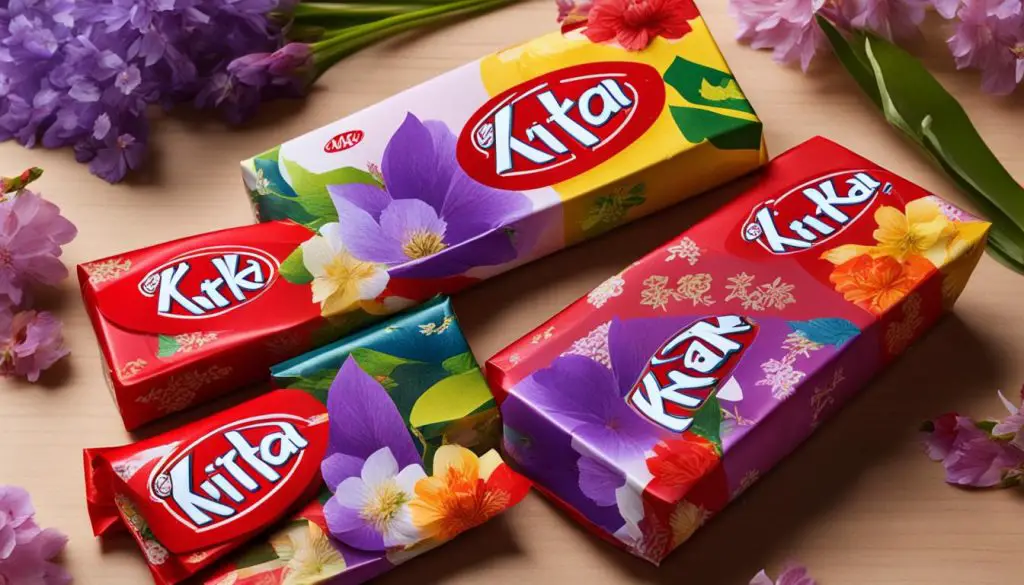
Kit Kat Flavors – A World of Variety
One of the reasons why Kit Kats have become so popular in Japan is the incredible variety of flavors they offer. From traditional favorites to unique and adventurous options, there is something to satisfy every taste bud. Let’s take a closer look at some of the popular Kit Kat flavors in Japan.
Classic Flavors
While Kit Kats are known for their creative flavors, the classic options still hold a special place in the hearts of many. The original milk chocolate flavor is a timeless favorite that delivers a familiar and comforting taste. Other classic flavors like dark chocolate and white chocolate continue to be popular choices among Kit Kat enthusiasts.
Unique and Adventurous Flavors
What sets Kit Kats in Japan apart is the wide range of unique and adventurous flavors. From matcha (green tea) to sake and wasabi, these unconventional flavors offer a delightful twist on the traditional chocolate bar. These unique flavors not only cater to Japanese tastes but also attract visitors from around the world who are eager to try something new and exciting.
| Popular Kit Kat Flavors in Japan | Flavor Description |
|---|---|
| Strawberry | A fruity and refreshing flavor that captures the essence of Japanese strawberries. |
| Matcha (Green Tea) | A rich and aromatic flavor made with finely powdered green tea leaves. |
| Sake | A sophisticated flavor infused with the essence of traditional Japanese rice wine. |
| Wasabi | A bold and spicy flavor that combines the heat of wasabi with the sweetness of chocolate. |
These are just a few examples of the unique flavors you can find in Japan. Nestlé continues to introduce limited-edition flavors inspired by seasonal ingredients and regional specialties, keeping the excitement and demand for Kit Kats high.
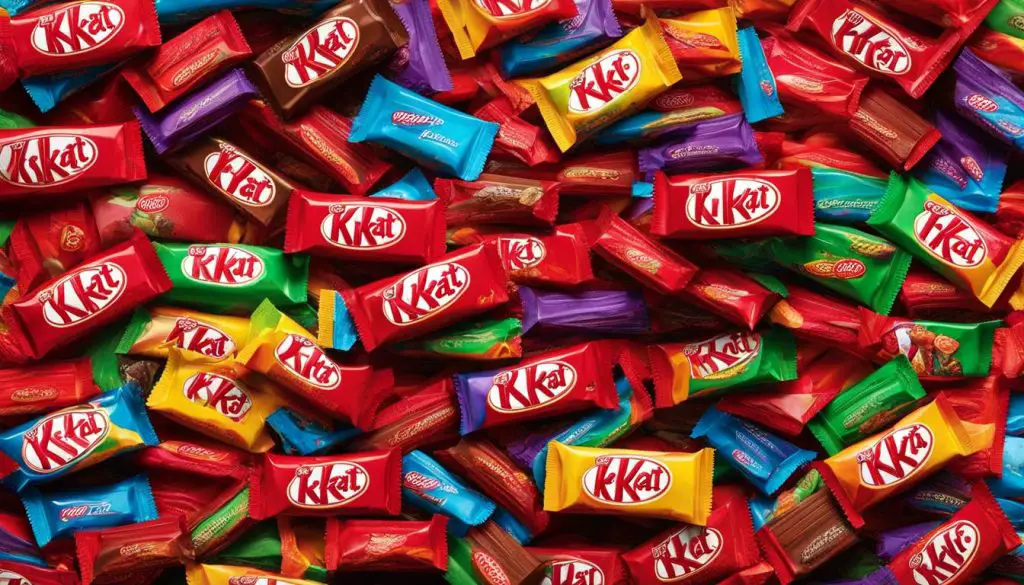
Whether you prefer the traditional classics or want to venture into new taste sensations, the world of Kit Kat flavors in Japan is sure to delight and surprise you. So, the next time you have the opportunity, be sure to try some of these unique and popular Kit Kat flavors.
Conclusion
As you have learned, Kit Kats in Japan hold a special place in the country’s customs and traditions. Beyond being a delicious treat, they are considered symbols of good luck, creativity, and innovation. With their wide range of flavors, Kit Kats offer a unique and delightful taste of Japanese culinary culture.
The cultural significance of Kit Kats is evident in their association with gift-giving traditions. Whether it’s the traditional strawberry flavor or the more adventurous sake or wasabi flavors, gifting Kit Kats has become a way to show appreciation and respect. They are often exchanged as omiyage, bringing back a taste of Japan to share with loved ones.
Japan’s love for Kit Kats extends beyond its borders, with a wide variety of flavors that reflect seasonal ingredients and regional specialties. From matcha (green tea) to unique creations by famous chefs, there is always something new and exciting to try. The constantly changing flavors and limited editions contribute to the allure and demand for Kit Kats in Japan.
So the next time you enjoy a Kit Kat, remember that you are not just savoring a delicious chocolate bar. You are also indulging in a cultural experience, appreciating the customs and traditions of Japan through a sweet and iconic treat.
FAQ
Do Japanese teachers give Kit Kats as good luck charms?
Yes, the tradition of giving Kit Kats as good luck charms is popular in Japan, especially among students preparing for exams.
What is the cultural significance of Kit Kats in Japan?
Kit Kats have gained cultural significance in Japan, symbolizing innovation and creativity. They have also become popular gifts, particularly as omiyage, souvenirs or presents given when returning from a trip.
Why are Kit Kats so popular in Japan?
Kit Kats are popular in Japan due to their association with good luck, their variety of flavors, and their limited editions that cater to Japanese tastes. They have a cult-like following and are highly sought after.
How do Kit Kats relate to Japanese gift-giving culture?
Kit Kats have become intertwined with Japanese gift-giving culture. They are often given as gifts to friends, family, and colleagues, thanks to their unique flavors and packaging. They align with the tradition of omiyage, where travelers bring back gifts to share with others.
What are some popular Kit Kat flavors in Japan?
Some popular Kit Kat flavors in Japan include strawberry, matcha (green tea), sake, and wasabi. Kit Kat Chocolatory stores offer even more unique and high-end flavors created by famous chefs.
Note: Conclusion section is not included in this response.

